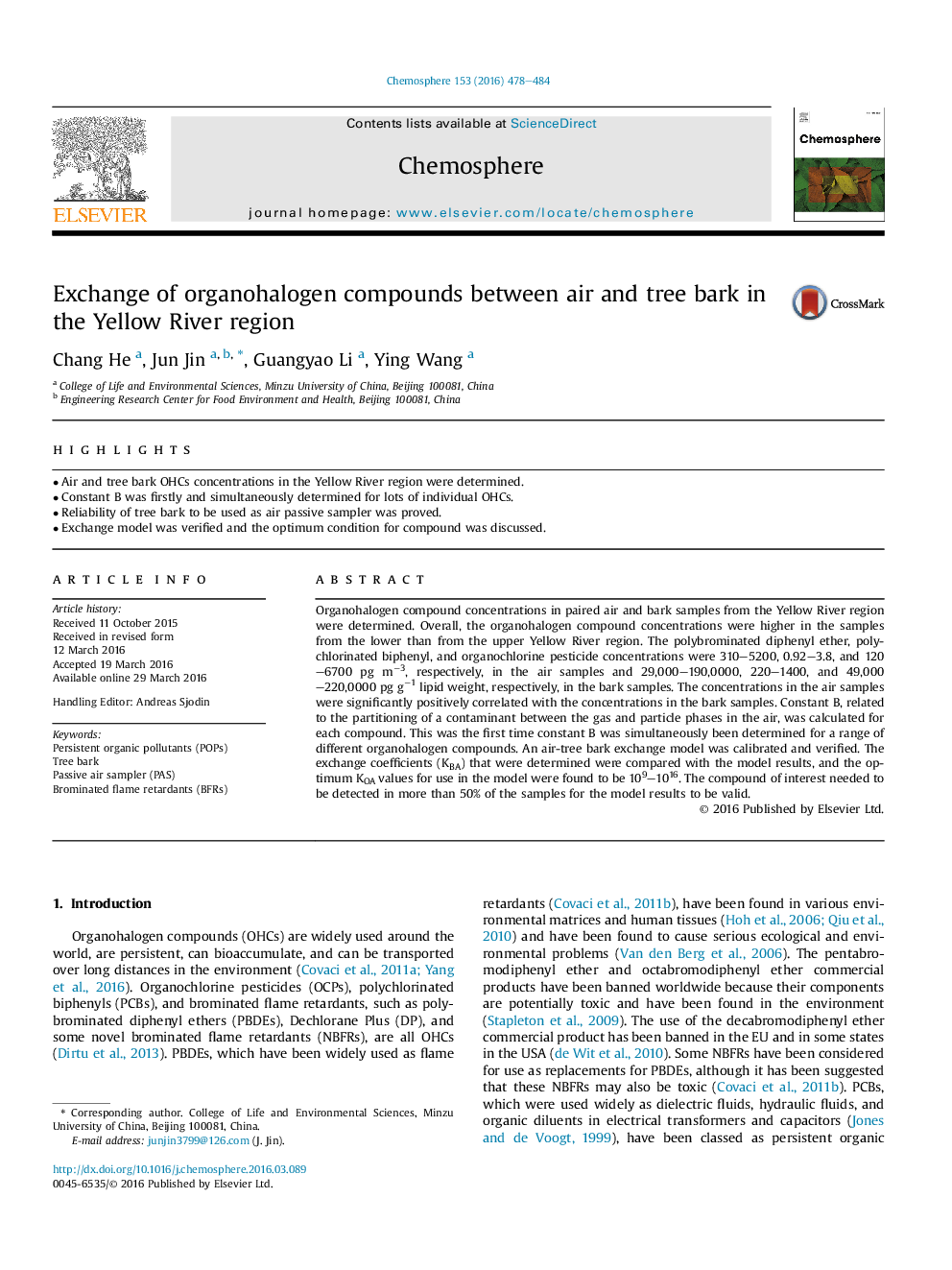| Article ID | Journal | Published Year | Pages | File Type |
|---|---|---|---|---|
| 4407649 | Chemosphere | 2016 | 7 Pages |
•Air and tree bark OHCs concentrations in the Yellow River region were determined.•Constant B was firstly and simultaneously determined for lots of individual OHCs.•Reliability of tree bark to be used as air passive sampler was proved.•Exchange model was verified and the optimum condition for compound was discussed.
Organohalogen compound concentrations in paired air and bark samples from the Yellow River region were determined. Overall, the organohalogen compound concentrations were higher in the samples from the lower than from the upper Yellow River region. The polybrominated diphenyl ether, polychlorinated biphenyl, and organochlorine pesticide concentrations were 310–5200, 0.92–3.8, and 120–6700 pg m−3, respectively, in the air samples and 29,000–190,0000, 220–1400, and 49,000–220,0000 pg g−1 lipid weight, respectively, in the bark samples. The concentrations in the air samples were significantly positively correlated with the concentrations in the bark samples. Constant B, related to the partitioning of a contaminant between the gas and particle phases in the air, was calculated for each compound. This was the first time constant B was simultaneously been determined for a range of different organohalogen compounds. An air-tree bark exchange model was calibrated and verified. The exchange coefficients (KBA) that were determined were compared with the model results, and the optimum KOA values for use in the model were found to be 109–1016. The compound of interest needed to be detected in more than 50% of the samples for the model results to be valid.
